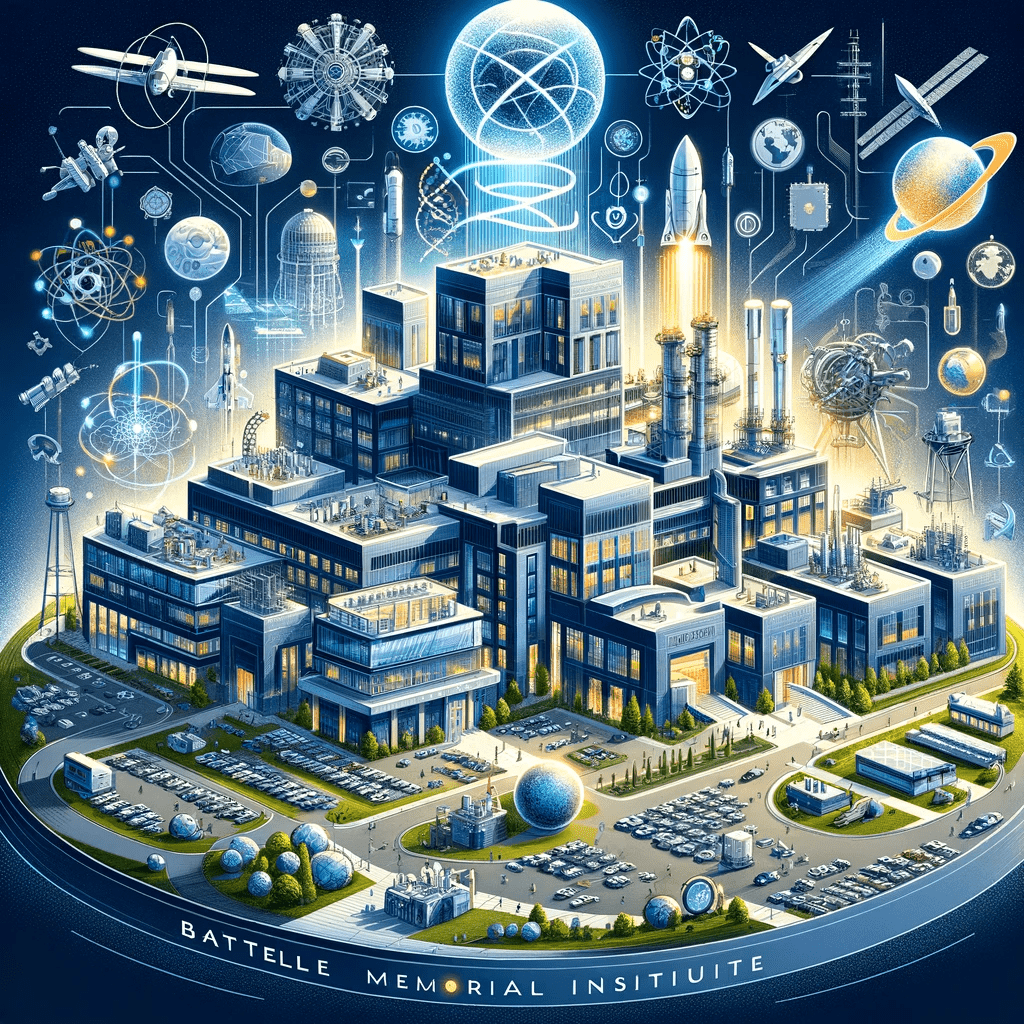Battelle Memorial Institute

The Battelle Memorial Institute is a private nonprofit applied science and technology development company headquartered in Columbus, Ohio. The institute was named after Gordon Battelle, an industrialist who willed his entire estate to the establishment of a research institute in 1923. Battelle’s commitment to scientific advancement has since played an instrumental role in the emergence of various groundbreaking technologies.
Battelle Memorial Institute’s financial growth over the years isn’t solely attributable to the original endowment. The Institute’s operations, including managing national laboratories, providing commercial services, and securing government and private sector contracts, have significantly contributed to its financial growth and stability.
Battelle operates across a wide range of scientific disciplines, with a particular emphasis on areas such as health and life sciences, energy and environmental sciences, national security, and space. Its innovative research has led to numerous technological advancements and important scientific breakthroughs. Over the years, Battelle has developed technologies like the Xerox photocopier, compact discs (CDs), and the universal product code (UPC), which is widely used in retail for tracking inventory and sales.
Battelle’s significant influence also extends to its stewardship of national laboratories for the U.S. Department of Energy (DOE). The Institute manages the Pacific Northwest National Laboratory (PNNL), National Renewable Energy Laboratory (NREL), Oak Ridge National Laboratory (ORNL), and Idaho National Laboratory (INL). These laboratories work on numerous high-profile projects that have a significant impact on national and global issues.
- Pacific Northwest National Laboratory (PNNL): PNNL conducts research in various scientific domains, including environmental science, biology, chemistry, and data analytics. Some of its key projects involve climate research, nuclear science, and cybersecurity.
- National Renewable Energy Laboratory (NREL): As its name suggests, NREL focuses on renewable energy and energy efficiency research. This includes working on technologies related to solar power, wind energy, and bioenergy, as well as the development of more efficient buildings and electric grids.
- Oak Ridge National Laboratory (ORNL): ORNL is the largest multi-disciplinary science and energy national laboratory in the DOE system. Its areas of research are vast, spanning materials science, nuclear science, biological systems, environmental change, and energy production. ORNL is home to several of the world’s top supercomputers, which are used for complex simulations and data analysis.
- Idaho National Laboratory (INL): INL leads in nuclear energy research, specifically advanced reactor technology and fuel cycle research. It also works on projects related to national security, like cybersecurity and infrastructure protection.
As a significant player in the field of nuclear technology, Battelle works on the development of advanced nuclear reactor designs and materials. This involves the use of computational modeling to better understand the behaviors of different materials within a nuclear environment. It also encompasses the management of nuclear waste and the development of safer, more effective ways of dealing with this challenging byproduct of nuclear power.
In the realm of environmental science, Battelle’s work is often focused on developing alternative, sustainable energy sources and improving energy efficiency. This has included research into biofuels, energy storage solutions, and technologies for capturing and sequestering carbon emissions.
- Battelle Memorial Institute is one of the world’s most prominent contract research organizations, with more than 22,000 employees. It has a rich history of innovation dating back to 1929, including developing the first nuclear fuel for the Nautilus, the world’s first nuclear submarine (source: Battelle’s official website).
- Battelle was instrumental in the development of the technology that led to the creation of the Xerox machine. Chester Carlson, who invented the xerography process, partnered with Battelle to develop his invention, which became the basis for the Xerox Corporation (source: “The Idea Factory: Bell Labs and the Great Age of American Innovation” by Jon Gertner).
- Battelle Memorial Institute is also known for its pivotal role in managing the remediation of the Hanford Site, a decommissioned nuclear production complex, for the U.S. Department of Energy (source: “Plutopia: Nuclear Families, Atomic Cities, and the Great Soviet and American Plutonium Disasters” by Kate Brown).
Its research has influenced various sectors, from nuclear technology and environmental science to healthcare and data analytics. As we move further into the 21st century, Battelle continues to uphold its mission of using science and technology for the betterment of humankind.
Battelle’s focus on national security, aerospace technologies, and advanced materials science could conceivably intersect with the study of unidentified aerial phenomena. If such phenomena were to be proven as advanced, non-human technologies, then it would likely fall within the realm of interest of many scientific and technological research institutions like Battelle.
If alien biological material were discovered, facilities like this, could be well-equipped to study it. High-level biosafety labs, such as Biosafety Level 3 (BSL-3) or Biosafety Level 4 (BSL-4), are typically found at facilities that conduct research involving potentially dangerous or infectious biological agents. Based on the descriptions of the labs managed by the Battelle Memorial Institute, several of them might have these kinds of facilities:
- Pacific Northwest National Laboratory (PNNL): Given PNNL’s research in biology and environmental science, it is plausible that this laboratory has high-level biosafety labs.
- Oak Ridge National Laboratory (ORNL): ORNL conducts research on biological systems, which suggests they might also have high-level biosafety labs.
While their work can seem shrouded in complexity, the essence of Battelle’s work is simply the application of scientific knowledge to solve real-world problems. As they strive to push the boundaries of what’s possible, Battelle continues to embody the spirit of innovation and scientific exploration, playing an integral role in shaping our shared technological future.

